|
Temples of Kumbakonam 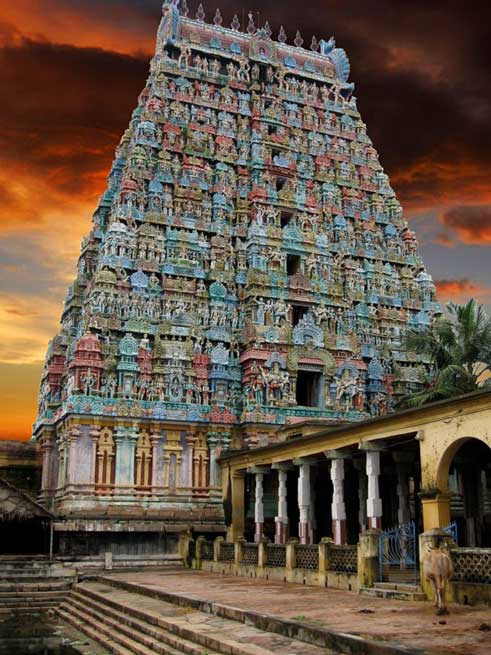 ADI KUMBESWSARA
Tamil Nadu is famous for its ancient temples with ornate and intricate
architecture. It is known as the land of temples. Thirty-three thousand
ancient temples which are 800 to 1,200 years old, are found scattered
all over this land. Many of the largest Hindu temples are found here.
They have historical records going back to 3,000 years. The state has
also over two thousand temple tanks.There are 108 Divya Desams which are temples in which the great Vishnava saints called Alwars worshipped Lord Vishnu with many beautiful hyms. Of these 105 are found in India and especially Tamil Nadu, one in Nepal called Muktinath, and two in the celestial realm of Vishnu known as Vaikunda. In all these thenidol of Vishnu has different postures, lying on the celestial snake, standing and sitting. The city of Kumbakonam sits at the very centre of this ancient land and is surrounded by hundreds of temples. I had gone to a few of the outlying ones during my previous visits but since I always avoided the crowded city and lived in quiet areas outside the city I felt I had not done justice to the temples within the city so this time I stayed in a hotel right in the heart of the city next to the bus stop bristling with crowds, cows, dogs and cats. I managed to get a helpful auto driver who was keen on taking me to as many temples as we could possibly crowd into one day. Of course this was hardly the way I liked to visit temples but this time I had no choice. ADI KUMBESWSARA The first temple to go to was of course the Adi Kumbeswara temple. The word Kumbha means a pot and the legend goes that the creator Brahma had a pot of nectar which contained the seed of all living beings. During the time of the great flood, the pot was floating on the waters and at last came to rest at the spot where the town of Kumbakonam now stands. The nectar fell in the Mahamaham and the Potramarai tanks. To commemorate this, the festival known as Mahamaham is held here every twelve years. This is can be compared to the Maha Kumbh festival which is held in Haridwar, Allahabad and Ujjain every twelve years. 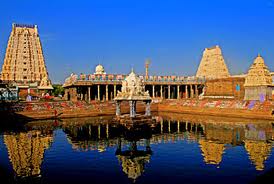 One of the halls has a huge pillar on which the twenty seven stars and twelve rasis are carved. There is an idol of Subramanya having six hands instead of twelve. The temple has been consecrated by the holy feet of many of the Nayanmars including the great four. 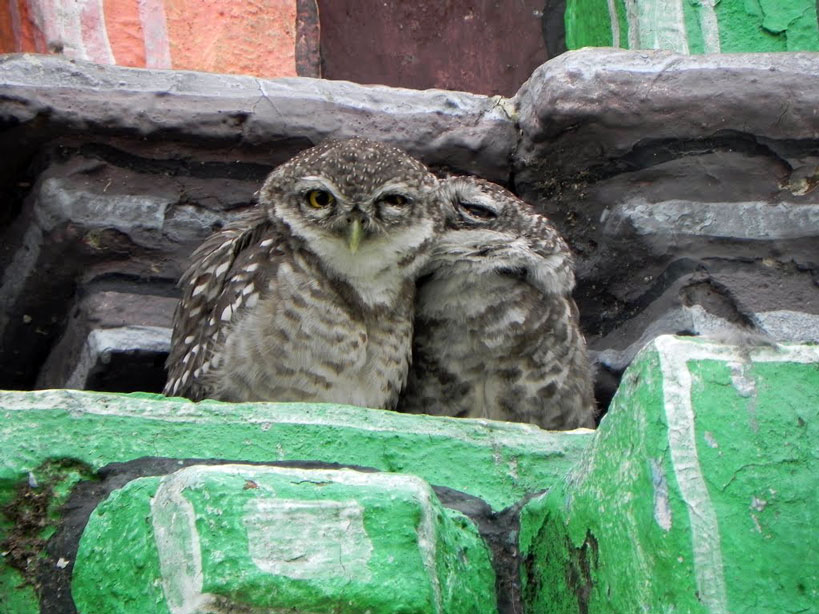 SPOTTED OWLETs - Athene brama - FOUND IN THE ADI KUMBESWARAR TEMPLE TOWER, KUMBAKONAM, TAMILNADU, INDIA NAGESWARA This is one of the most impressive temples I visited inside Kumbakonam. It is one of the jyotir lingams, and is of course in the Chola style of architecture. The architect was obviously a great astronomer as were all the architects in most of the temples of South India. The temple is placed in such a way that the rays of the morning sun during the first three days of the Tamil month of Chitrai (April /May) which corresponds to the Hindu New Year, fall directly at the base of the lingam in the sanctum sanctorum. The way from the main gopuram to the sanctum is very long and we have to pass through many corridors yet the rays fall straight at the base of the lingam. Hence this place is also known as Surya Kottam, or the citadel of the sun. This sanctum is in the shape of a chariot like the temple of Sharangapani which I visited next. 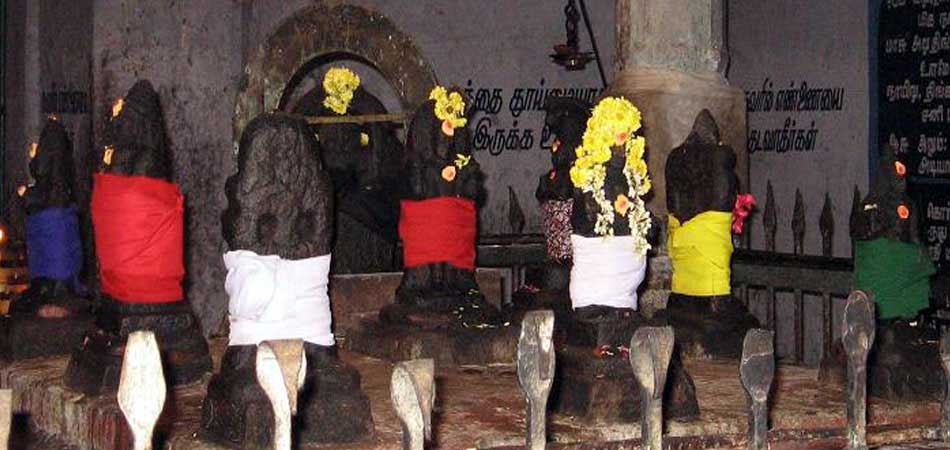 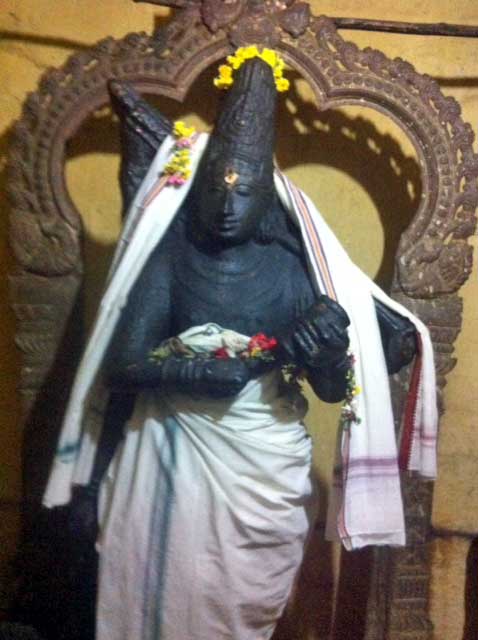 Shiva as Rudra carrying a scythe across his back SHARNGAPANI TEMPLE Sharngam is the bow of Lord Vishnu and when I went up to the sanctorum I expected to find a figure of Vishnu holding the bow but instead I was confronted by a huge figure of the reclining Vishnu, holding his head in his hand and lying on the serpent Adishesha. It was a fantastic figure. However the small idol of Vishnu to which all the pujas were done was kept in front and he was holding the Sharngam in his hands and looked almost like Rama. It is rare to find the figure of Vishnu holding his bow. 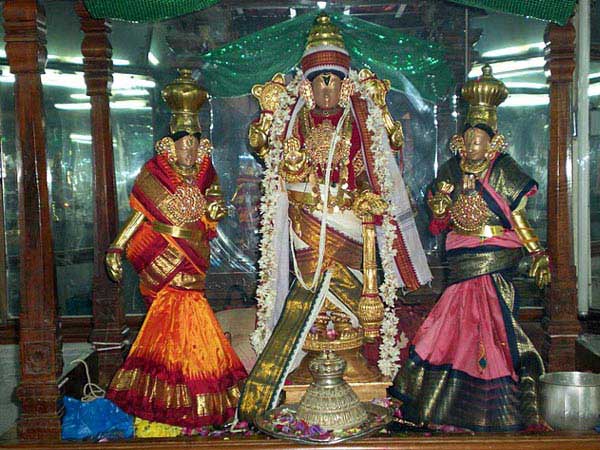 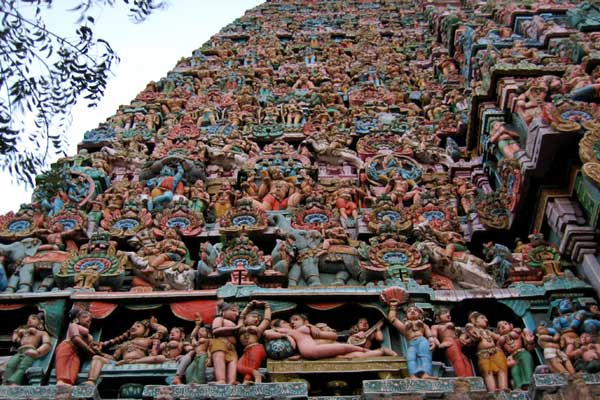 d dDeatil SHARNGAPANI TEMPLE Gopuram This is the largest Vishnu temple in Kumbakonam and has the tallest gopuram (tower). It has eleven tiers. It is one of the Divya Desams. The temple is in the form of a chariot drawn by horses and elephants with doors on both sides showing the descent of Lord Sharngapani from heaven in a chariot. Since the main sanctum is inside the chariot we have to climb some steps to reach the temple. In fact there are steps on both sides of the chariot. One of these is known as Uttarayana vaasal and the other is Dakshinayana vassal. The Hindu year is divided into two parts of six months each. The period from the 15th of January to the 15 of July is known as Uttarayana when the sun moves from the south to the north and the northern hemisphere enjoys summer. The period from the 15th of July to the 15th of January is known as Dakshinayanam when the sun moves towards the south and the northern hemisphere has winter. Each of these two sets of steps leading to the shrine is opened for six months of the year during the appropriate time. SRI RAMA TEMPLE This was hardly a stone’s throw from the Sharngapani temple. It had huge stone figures of Rama with Sita beside him. Lakshmana stands to the left holding the royal umbrella and Shatrugnan to the right waving the chamara (yaks tail fan) and Hanuman sitting in front of Lakshmana. SOMESWARA TEMPLE This temple had a very beautiful Shiva lingam. As usual it had huge gopurams (towers) on all four sides. A very old Brahmin priest who could hardly walk was hobbling around. I felt so sorry for these old priests who seem to have spent their entire lives in the service of the deities and apparently got nothing out of it either financially or spiritually. Of course I can’t judge the latter and hopefully I am mistaken but they all look a bit sad and weary of life. I would have loved to have sat with some of them and questioned them but of course Time stood like a sentinel over me!! SWAMIMALAI TEMPLE This is a temple dedicated to Muruga or Kartikeya, son of Shiva. I had been to this temple two years and ago and it impressed me so much that I was overjoyed to find that it was only five kilometres from Kumbakonam. The next day was Kartika Deepam which is an important festival in S. India something like Diwali in the north. It is especially important for Muruga or Kartikeya so I decided to go the previous afternoon so as to avoid the crowds. It was indeed a wise decision guided by Muruga himself. 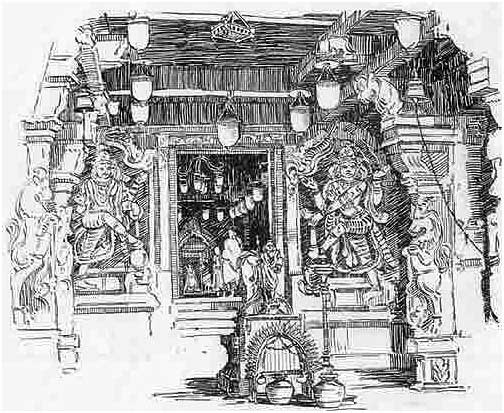 Sketche of the SWAMIMALAI temple from the 19th century There are six temples (arupadai veedu) which are most significant for the worship of Kartikeya and Swamimalai is the fourth amongst these. The name of the Lord here is Swaminathan since he gave the knowledge of the Supreme to his own father, Shiva at this very place. The story goes that once when saint Bhrigu was going to start his penance, he got a boon from Shiva that anybody disturbing him would forget all his knowledge. When his tapas reached its peak, the fire emanating from his head reached the heavens and the frightened gods ran to Shiva and asked him to protect them. The Lord extinguished the fire by placing his hand over the sage’s head. However the boon which he had given the sage came to pass and he could not remember anything after this. 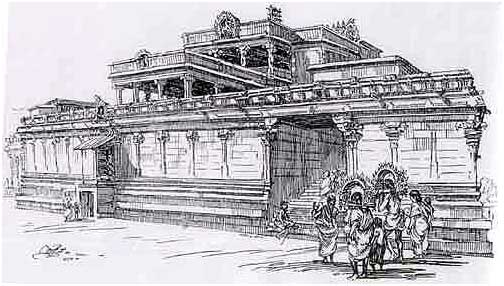 The temple is built on an artificial hillock and has 60 beautiful stone steps leading to the top. Each step represents once cycle of sixty years according to the Hindu calendar. At the bottom of the hill there are two temples dedicated to Lord Sundareswara and the goddess Minakshi. The temple of Shiva is constructed below the one to Muruga to show that he is only a disciple of Muruga. 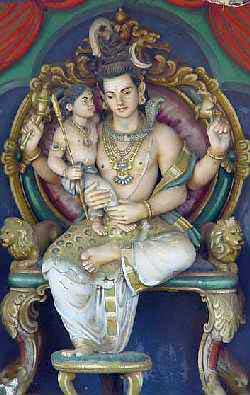 Bala Muruga UTHUKADU KALIYA NARTANA TEMPLE This was one of the temples I had been longing to see for a long time. It is a temple of the original of the famous figure of Krishna dancing on the head of the snake Kaliya. This is a beautiful figure which is seen in many houses in the south but very few know the origin of this figure. Nobody seemed to know how to get to this temple. However my auto rikshaw driver found out the way and we trundled up and down many tortuous lanes, passing lovely green fields and at last came to a small village called Uthukadu, about 12 kms from Kumbakonam. The village was only a small collection of huts with just two large houses, no shops to buy anything for offerings. The temple itself appeared to be undergoing some renovation since all I could see was scaffolding. However I hopped out and went inside only to find that the priest had not arrived even though it was almost 11 am. Nothing daunted I ventured to go to one of the “grand” houses and begged the priest to come and open the door. He was a young man and came out with a cell phone stuck to his ear. He mumbled something about the construction and hence the tardiness in opening the temple. I followed hot on his heels and stood just outside the door opening into the sanctum. As it opened I was stunned by the light which came pouring out. There was only one hanging oil lamp inside yet I felt as if I had been hit by a flood of light. In the midst of this light I saw the exquisite figure of the dancing Krishna made in panchaloha (five metals). His left leg was apparently placed on top of Kaliya’s head and his left thumb was touching the tail of the snake. His right leg was poised above in a dancer’s pose and if you looked closely you could see the scars on this leg below the knee due to the lashes given by Kaliya’s tail. I did try to take a photo but even though I was standing only a few feet away all I got was a blaze of light. 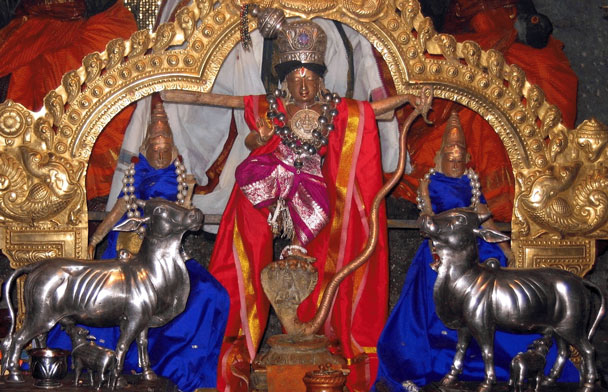 UTHUKADU KALIYA NARTANA I had heard that this was a miraculous figure since his foot does not actually touch the snake’s head and the whole figure is supported by just the touch of his thumb on the tail. In fact it is said that the figure has not been made by a human hand and that it was sage Narada’s creation. I knew this story and asked the priest to explain it to me. He asked me haughtily if I knew Tamil and if not his narrative would be meaningless to me. I said I knew enough to understand him so he said that he would say it just once and if I couldn’t follow he would not repeat! I agreed and he took up a small thin stick and mumbled something in Tamil and passed the stick below the feet of my charming gopala. The stick passed through with ease. He then passed the stick round the hand touching the tail to show that it was being held by the whole palm. Had I not known the story before I would not have been able to follow his explanation. I supposed that he was angry with me for having turfed him out of his house. However I was not going to let him off so easily and insisted on knowing other details of the place. This place had once been a forest where Nandini and Patti, the calves of the celestial cow Kamadhenu used to play. Once the sage Narada was visiting the place and he told them the story of how the baby Krishna had subdued the poisonous snake Kaliya who was poisoning the waters of the river Kalindi and preventing people from drinking it. The two calves were shocked at the way the child Krishna was forced to subdue such a huge snake and started crying. Their mother didn’t know what to do with them and she begged Krishna to comfort her children. He came to the spot and danced again and convinced the two calves that it had been no effort for him and was just a sport! They were delighted and Narada begged Krishna to remain in that place in that form to delight all who came there. Thus we find that the figure of Krishna has the two calves, Nandini and Patti sitting happily in front of him. 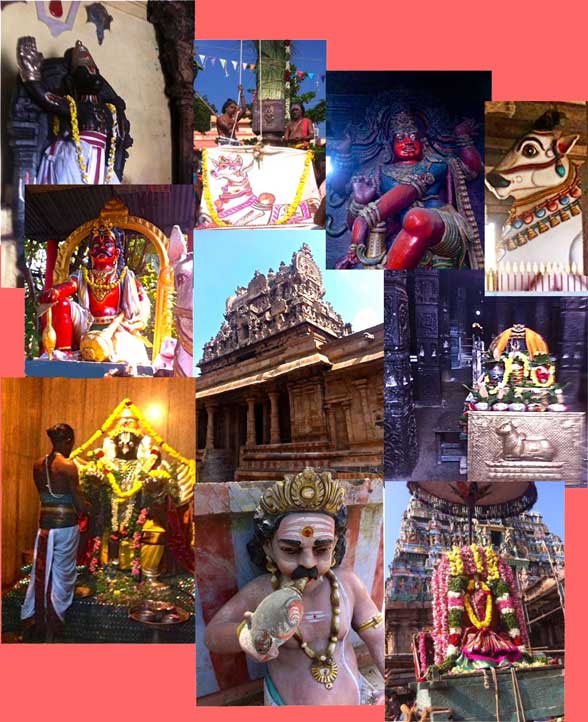 The Lord did not say a word but took his devotee with him to his divine abode. Once the poet expressed a desire to return to Utthukadi to see him dance. Krishna agreed and took him back but he told him that he should keep composing songs according to the metre in which he was dancing. If he faltered, Krishna would turn into an idol. Of course as luck would have it, the poet faltered once when the Lord was doing a most intricate set of steps and he turned into the beautiful idol which all of us can see today. Then the poet expressed a wish that the Lord should continue to stay there and dance every night. Many of the priests say they have heard the tinkle of ankle bells coming from the temple at night. Many of the villagers who stay near the temple swear that they have heard Venkata Kavi singing and the Lord dancing. All this I remembered as I stood before the Lord then I went out to see if I could get anything to offer my darling. I suddenly discovered a small shop which I had not noticed before. The shopkeeper gave me some til oil and some sugar candy which he said was a favourite of my Lord. Armed with this I returned to the temple and offered it to the priest. He seemed to thaw at this and said that he was running out of oil and was wondering how he could get some. I felt so blessed that He had allowed me to make this small offering to him. How that sanctum was so brilliantly lit even though it had only one small hanging lamp is anybody’s guess. I tore myself from there with difficulty, thanking him over and over again for his grace in having taken me there. SRI MAHAPRATYANGIRA DEVI This is a small but very powerful temple to the goddess in her fierce aspect which is situated in a small village called Ayyavadi around ten kms from Kumbakonam. Legend has it that the five Pandavas had worshipped the goddess at this place during their twelve years in the forest. The story of the goddess is closely connected with the avatara of Vishnu as Narasimha (half man/half lion) which he took to kill the demon king Hiranyakashipu. After having vented his anger at Hinranyakashipu, Narasimha’s anger was still unabated. Everyone was frightened and prayed to Shiva to help them. Shiva took on the form called Sarabeswara with a lion’s face and eagle’s wings. His two Shaktis accompanied him in the form of Mahapratyangira Devi and was seated on both of the wings of Sarabeswara. Sarabeswara by himself could not control Narasimha and eventually it was the powerful Pratyangira devi who cooled Narasimha’s anger and hence she is believed to be more powerful than any other power. 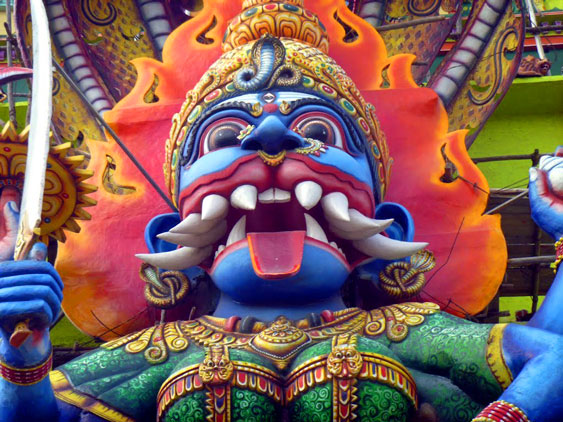 SRI MAHAPRATYANGIRA DEVI I had heard that yagas were conducted on every full moon and new moon days in which huge volumes of red chillies are offered into the fire. But strangely enough it is a fact that no one choked with the fumes rising from the flames. Normally even one chilli burning in a fire is enough to make most people start coughing and choking but despite the fact that many kilograms of chillies are poured into the flaming fire no one is ever seen to choke or cough. As luck would have it I reached there on a full moon day when the yaga was well on its way. I did not get any smell of the chillies nor did I cough nor in any way feel uneasy. Since many people were sitting around the fire of the yaga, the temple was quite empty and I was able to stand right in front of the deity and pray as long as I liked. She has the face of a lion and was seated in a chariot driven by four lions. She has eight arms carrying different types of weapons. It is believed that all evil forces will be taken away by the goddess. In fact she is the goddess who is able to obstruct any form of black magic which might affect a devotee. Her moola mantra had been discovered by two great rishis called Angiras and Pratyangiras. Hence she took on the name of Pratyangira. Angiras rishi’s name is connected with the Atharva Veda which contains many types of magic mantras and hence her worship is said to be most effective in removing all types of black magic. Her worship had been kept a secret for a long time. But now her temples have started appearing at various places but the most famous one is at Ayyavadi. Again it is her grace that I was able to go to the temple at a most auspicious day. 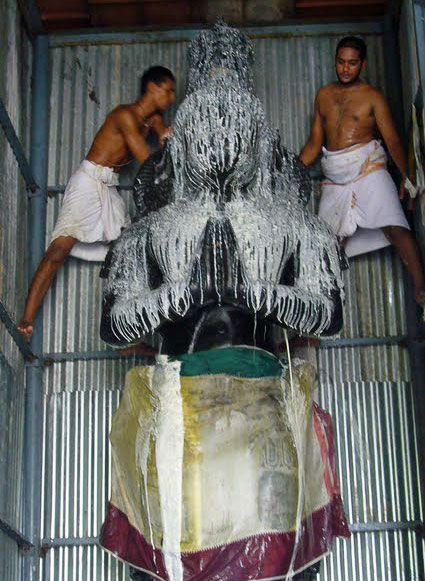 Hanuman abhishekam, Kanchipuram
|